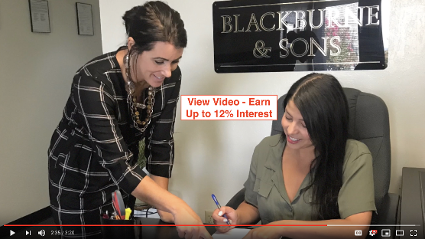 Before we get into the subject of syndicated commercial construction loans and where to get your large commercial construction project funded, we have an important announcement.
Before we get into the subject of syndicated commercial construction loans and where to get your large commercial construction project funded, we have an important announcement.
Important Announcement:
We here at C-Loans, Inc. just discovered a HUGE bug in our newest commercial mortgage portal, CommercialMortgage.com. Arghhh! Queue the "Agony of Defeat" scene where that downhill skier takes a horrible biff.
Our computer programmers made one single digit error. As a result, none of the 500 new banks we have added in the past six months have been appearing on the Lender List! Picture old man Blackburne careening and tumbling down a steep slope in a giant ball of snow, broken skis, broken bones, and blood.
Therefore, if you have recently tried CommercialMortgage.com, viewed the Lender List for your particular deal, and went, "Meh", I don't blame you. But this wonderful commercial loan portal is fixed now. I urge you (heck, I beg you) to come back and try it again. Because our 500 latest banks will now show up, you will love-love-love the repaired version of CommercialMortgage.com.

Back to the Syndication of Large Commercial Construction Loans:
Commercial construction loans over $10 million are often made by a syndicate of community banks and mid-sized commercial banks. A community bank is one with less than $2 billion in assets (cash, bonds, and loans outstanding). A mid-sized bank is one with $2 billion to $20 billion in assets.
A regional bank is a depository institution, i.e. a bank, savings and loan, or credit union, which is larger than a community bank, which operates below the state level, but smaller than a money center bank, which operates either nationally or internationally. The asset size of a regional bank is normally $20 billion to, say, $75 billion.
Even larger than regional banks are money center banks. Did you know that there are approximately 5,000 commercial banks in the US? The word "commercial" simply means "business", as opposed to investment banks and merchant banks. When you and I think of a bank, you are thinking of a commercial bank.

Therefore, when I train you to submit your "A" quality commercial loan to at least 15 different commercial banks, you will only be scratching the surface of available banks. There are also approximately 6,000 credit unions in the U.S.
You may recall that I sent you an announcement about a syndicate I was putting together to build a Marriott Fairfield Inn in Oregon. Well, you may be shocked to hear that the lender making the $15 million construction loan is a credit union! By the way, that $2 million syndicate is fully-subscribed; but if you are a very wealthy, accredited investor interested in earning a yield of over 25%, you should call Angela Vannucci at 916-338-3232 and get on the backup list, just in case anyone cancels.
Now Back to Our Syndication Discussion:
Typically these commercial construction loan syndicates will consist of three or four community banks located reasonably close to the subject property, and often the bank presidents are golfing buddies.
Here is how these syndicated commercial construction loans get originated. Suppose a commercial bank gets a $15 million commercial construction loan request from a commercial property developer who is important to the bank. Fifteen million dollars, however, is a pretty large commercial construction loan for a community bank with just $2 billion in assets, but let's say the commercial construction loan request is a good one.
What might happen is that our first community bank might lead a small syndicate of friendly competitors to make the $15 million commercial construction loan. Most commercial construction loans are priced at WSJ Prime plus 1%, and the bank would charge a one-point loan origination fee. The Wall Street Journal Prime Rate today is 5.5%, so if a larger bank were to make the entire $15 million loan itself, the interest rate to the developer would be 6.5%.

The interest rate on a syndicated loan, however, may be priced at WSJ Prime plus 1.5% floating (one-half of a percent higher), with a 7.0% floor and a loan origination fee of 1.5 points (an extra half-point). The lead bank might then sell off participations to other banks at prime plus 1% floating with a 6.5% floor and a loan fee of 1 point.
The lead bank might take a $3 million piece of the $15 million deal. The lead bank would then earn prime plus 1% floating and 1 point on its $3 million portion, and it would also earn a lead lender's fee of 1/2% interest and 1/2 point on the entire $15 million. The lead lender would then be responsible for making the progress inspections, disbursing the progress payments, and handling any foreclosure on the commercial construction loan.

Attention Developers. Do You Need More Equity?
We have largely finished our money raise on the Oregon Marriott Fairfield Inn, so we are looking for the next deal. Our sweet spot is raising between $750,000 to $2 million in equity for experienced developers of apartment buildings, retail properties, office buildings, industrial buildings, and hospitality properties nationwide. We are not going to raise more than 40% of the total equity required by the bank because we want our developer to have tons of skin in the game.
Need equity? Please do NOT send me some huge package. Please instead - to see if we have a fit - call me at 574-360-2486 (mobile) or just send me, George Blackburne III, a one-paragraph summary of what you are trying to do. Please make the subject line exactly, "Equity Contribution Request." Thanks!

Training Tips:
- Whenever you are trying to place a commercial construction loan request, you should immediately think of either a commercial bank or a credit union. Banks and credit unions make 99% of all commercial construction loans.
- You are NOT going to be able to get a New York bank to make a commercial construction loan in Virginia. Commercial construction loans are almost always made by a local lender, a bank or credit union located within 15 or so miles from the property. The reason why is that the construction lender has to make numerous progress inspections to check on the progress of the construction.
- Generally you should match the size of your commercial construction loan request to the size of the bank. Need a loan of just $1.5 million? You should take this small deal to the nearest community bank. Need a $15 million loan? Take it to a nearby regional bank. Need a $50 million commercial construction loan? Take your loan to a money center bank, a bank with more than $75 billion in assets - one of the "Big Boys."
- Notwithstanding the above, a community bank located close to the property may sometimes lead a syndicate of other nearby community banks to make the loan.

Do you need a commercial construction loan? My first recommendation is to enter your loan into C-Loans.com. The advantage of C-Loans.com is that you create a simple mini-app, and then you can actually submit your deal to bank after bank, six at a time, until you find one in the mood to lend. C-Loans.com is also free!
If you just don't find a ravenous lender on C-Loans.com, then you should move onto CommercialMortgage.com (CMDC"). Now CMDC is just a list of suitable potential lenders, along with their contact information. You cannot actually submit an executive summary of your commercial loan to the lender. You have to do that by hand. However, there are close to 4,000 commercial lenders on CommercialMortgage.com, far more than on C-Loans.com. And like C-Loans, CMDC is also 100% free! (Plus our 500 newest banks will finally now appear. Arghhh.)

The secret to success in commercial mortgage brokerage is to present your loan to bank after bank until you find a hungry one. Fifteen banks is the magic number. If all fifteen banks turn your deal down, your loan may not be do-able; but until you have submitted your commercial loan to fifteen banks, you are still in the early innings.
Using commercial mortgage portals like C-Loans.com and CommercialMortgage.com, finding 15 banks is easy-peasy.
























